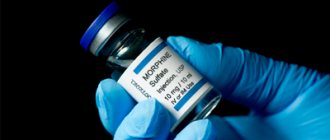Description of the drug KO-TRIMOXAZOL (KO-TRIMOKSAZOL)
With the simultaneous use of co-trimoxazole, the effect of indirect anticoagulants is significantly enhanced due to slower inactivation of the latter, as well as their release from plasma proteins.
When used simultaneously with some sulfonylurea derivatives, the hypoglycemic effect may be enhanced, which is associated with an increase in the concentration of the free fraction of co-trimoxazole.
The simultaneous use of co-trimoxazole and methotrexate may lead to increased toxicity of the latter (in particular, the appearance of pancytopenia) due to its release from plasma proteins.
Under the influence of butadione, indomethacin, naproxen, salicylates and some other NSAIDs, it is possible to enhance the action of co-trimoxazole with the development of undesirable effects, since the active substances are released from their binding to blood proteins and their concentration increases.
Concomitant use of diuretics and co-trimoxazole increases the likelihood of developing thrombocytopenia caused by the latter, especially in elderly patients.
In the case of simultaneous administration of chloridine with co-trimoxazole, the antimicrobial effect is enhanced, since chloridine inhibits the formation of tetrahydrofolic acid, necessary for the synthesis of nucleic acids and proteins. In turn, sulfonamides inhibit the formation of dihydrofolic acid, which is a precursor of tetrahydrofolic acid. This combination is widely used in the treatment of toxoplasmosis.
The absorption of sulfamethoxazole and trimethoprim when taken together with cholestyramine is reduced as a result of the formation of insoluble complexes, which leads to a decrease in their concentration in the blood.
Reduces the intensity of hepatic metabolism of phenytoin (extends its T1/2 by 39%), increasing its effect and toxic effect.
With simultaneous use of co-trimoxazole with pyrimethamine in doses exceeding 25 mg/week, the risk of developing megaloblastic anemia increases.
May increase serum digoxin concentrations, especially in elderly patients; monitoring of serum digoxin concentrations is necessary.
The effectiveness of tricyclic antidepressants when taken in combination with co-trimoxazole may be reduced.
Patients receiving co-trimoxazole and cyclosporine after kidney transplantation may experience a reversible deterioration in renal function, manifested by an increase in creatinine levels.
When used simultaneously with ACE inhibitors, especially in elderly patients, hyperkalemia may develop.
Trimethoprim, by inhibiting the renal transport system, increases the AUC of dofetilide by 103% and the Cmax of dofetilide by 93%. With increasing concentrations, dofetilide may cause ventricular arrhythmias with prolongation of the QT interval, including tachycardia. Simultaneous use is contraindicated.
Sulfonamides
Sulfonamides are the first class of AMPs for widespread use. In recent years, the use of sulfonamides in clinical practice has decreased significantly, since their activity is significantly inferior to modern antibiotics and they are highly toxic. It is also significant that due to many years of use of sulfonamides, most microorganisms have developed resistance to them.
Mechanism of action
Sulfonamides have a bacteriostatic effect. Being analogues of PABA in chemical structure, they competitively inhibit the bacterial enzyme responsible for the synthesis of dihydrofolic acid, a precursor of folic acid, which is the most important factor in the life of microorganisms. In environments containing large amounts of PABA, such as pus or tissue breakdown products, the antimicrobial effect of sulfonamides is significantly weakened.
Some topical sulfonamide preparations contain silver (silver sulfadiazine, silver sulfathiazole). As a result of dissociation, silver ions are slowly released, exerting a bactericidal effect (due to binding to DNA), which is independent of the concentration of PABA at the site of application. Therefore, the effect of these drugs persists in the presence of pus and necrotic tissue.
Activity spectrum
Initially, sulfonamides were active against a wide range of gram-positive ( S. aureus
,
S.pneumoniae
, etc.) and gram-negative (gonococci, meningococci,
H.influenzae
,
E.coli
,
Proteus
spp., salmonella, shigella, etc.) bacteria. In addition, they act on chlamydia, nocardia, pneumocystis, actinomycetes, malarial plasmodia, and toxoplasma.
Currently, many strains of staphylococci, streptococci, pneumococci, gonococci, meningococci, and enterobacteria are characterized by a high level of acquired resistance. Enterococci, Pseudomonas aeruginosa and most anaerobes are naturally resistant.
Preparations containing silver are active against many causative agents of wound infections - Staphylococcus
spp.,
P.aeruginosa
,
E.coli
,
Proteus
spp.,
Klebsiella
spp.,
Candida
.
Pharmacokinetics
Sulfonamides are well absorbed from the gastrointestinal tract (70-100%). Higher concentrations in the blood are observed when using drugs of short (sulfadimidine, etc.) and medium duration (sulfadiazine, sulfamethoxazole). Long-acting sulfonamides (sulfadimethoxine, etc.) and ultra-long-acting (sulfalene, sulfadoxine) bind to blood plasma proteins to a greater extent.
Widely distributed in tissues and body fluids, including pleural effusion, peritoneal and synovial fluid, middle ear exudate, chamber humor, and tissues of the urogenital tract. Sulfadiazine and sulfadimethoxine cross the BBB, reaching CSF concentrations of 32-65% and 14-30% of serum concentrations, respectively. Passes through the placenta and enters breast milk.
Metabolized in the liver, mainly by acetylation, with the formation of microbiologically inactive but toxic metabolites. Excreted by the kidneys approximately half unchanged; with an alkaline reaction of urine, excretion increases; small amounts are excreted in bile. In case of renal failure, accumulation of sulfonamides and their metabolites in the body is possible, leading to the development of toxic effects.
When applied topically, sulfonamides containing silver create high local concentrations of active components. Systemic absorption through the damaged (wound, burn) skin surface of sulfonamides can reach 10%, silver - 1%.
Adverse reactions
Systemic drugs
Allergic reactions:
fever, skin rash, itching, Stevens-Johnson and Lyell syndromes (more often when using long- and extra-long-acting sulfonamides).
Hematological reactions:
leukopenia, agranulocytosis, hypoplastic anemia, thrombocytopenia, pancytopenia.
Liver:
hepatitis, toxic dystrophy.
CNS:
headache, dizziness, lethargy, confusion, disorientation, euphoria, hallucinations, depression.
Gastrointestinal tract:
abdominal pain, anorexia, nausea, vomiting, diarrhea, pseudomembranous colitis.
Kidneys:
crystalluria, hematuria, interstitial nephritis, tubular necrosis. Crystalluria is often caused by poorly soluble sulfonamides (sulfadiazine, sulfadimethoxine, sulfalene).
Thyroid:
dysfunction, goiter.
Other:
photosensitivity (increased sensitivity of the skin to sunlight).
Local preparations
Local reactions:
burning, itching, pain at the application site (usually short-term).
Systemic reactions:
allergic reactions, rash, skin hyperemia, rhinitis, bronchospasm; leukopenia (with prolonged use on large surfaces).
Indications
Systemic drugs
Nocardiosis.
Toxoplasmosis (usually sulfadiazine in combination with pyrimethamine).
Malaria caused by chloroquine-resistant P. falciparum
(in combination with pyrimethamine).
Prevention of plague.
Local preparations
Burns.
Trophic ulcers.
Bedsores.
Contraindications
Allergic reactions to sulfonamide drugs, furosemide, thiazide diuretics, carbonic anhydrase inhibitors and sulfonylurea derivatives.
Should not be used in children under 2 months of age. The exception is congenital toxoplasmosis, in which sulfonamides are used for health reasons.
Kidney failure.
Severe liver dysfunction.
Warnings
Allergy.
It is cross-linked to all sulfonamide drugs. Given the similarity in chemical structure, sulfonamides should not be used in patients allergic to furosemide, thiazide diuretics, carbonic anhydrase inhibitors and sulfonylureas.
Pregnancy.
Because sulfonamides cross the placenta and animal studies have shown adverse effects on the fetus, use during pregnancy is not recommended.
Lactation.
Sulfonamides pass into breast milk and can cause kernicterus in breastfed infants and hemolytic anemia in infants with glucose-6-phosphate dehydrogenase deficiency.
Pediatrics.
Sulfonamides compete with bilirubin for binding to plasma proteins, increasing the risk of developing kernicterus in newborns. In addition, since the newborn's liver enzyme systems are not fully developed, elevated concentrations of free sulfonamide may further increase the risk of developing kernicterus. Therefore, sulfonamides are contraindicated in children under 2 months of age. The exception is congenital toxoplasmosis, in which sulfonamides are used for health reasons.
Geriatrics.
Elderly people have an increased risk of developing severe adverse reactions from the skin, suppression of hematopoiesis, thrombocytopenic purpura (the latter especially when combined with thiazide diuretics). Strict control is required. If possible, sulfonamides should be avoided in patients over 65 years of age.
Renal dysfunction.
A slowdown in renal excretion leads to the accumulation of sulfonamides and their metabolites in the body, which significantly increases the risk of toxicity. In particular, nephrotoxic reactions may increase, leading to the development of severe interstitial nephritis and necrosis of the renal tubules. Therefore, sulfonamides should not be used in renal failure.
Liver dysfunction.
Slowing down the metabolism of sulfonamides with an increased risk of toxic effects. Possible development of toxic liver dystrophy. Sulfonamides are contraindicated in severe liver pathology.
Pathological changes in the blood.
The risk of developing hematological adverse reactions increases.
Glucose-6-phosphate dehydrogenase deficiency.
High risk of developing hemolytic anemia.
Porphyria.
An acute attack of porphyria may develop.
Local application.
With prolonged use or application on large surfaces of the skin, it is necessary to monitor the function of the kidneys, liver and peripheral blood picture.
Drug interactions
Sulfonamides may enhance the effect and/or toxic effect of indirect anticoagulants (coumarin or indandione derivatives), anticonvulsants (hydantoin derivatives), oral antidiabetic agents and methotrexate due to their displacement from proteins and/or weakening of their metabolism.
When used simultaneously with other drugs that cause bone marrow suppression, hemolysis, or hepatotoxicity, the risk of developing toxic effects may increase.
When combined with sulfonamides, the effect of estrogen-containing contraceptives may be weakened and the frequency of uterine bleeding may increase.
With simultaneous use of cyclosporine, it is possible to increase its metabolism, accompanied by a decrease in serum concentrations and effectiveness. At the same time, the risk of nephrotoxicity increases.
It is not recommended to use sulfonamides and methenamine (urotropine) simultaneously due to the increased risk of developing crystalluria due to acidic urine.
Phenylbutazone (butadione), salicylates and indomethacin can displace sulfonamides from binding to plasma proteins, increasing their concentration in the blood.
Patient Information
Sulfonamide medications must be taken on an empty stomach with a full glass of water; the amount of fluid consumed (preferably alkaline drinks) should be sufficient to maintain diuresis at a level of at least 1.2 liters per day in an adult. When applied topically, you also need to drink plenty of fluids.
Follow the prescribed regimen throughout the course of treatment, do not miss a dose and take it at regular intervals. If you miss a dose, take it as soon as possible; do not take if it is almost time for the next dose; do not double doses.
Avoid exposure to direct sunlight and avoid ultraviolet radiation.
Use caution if you experience dizziness.
Be careful when using toothbrushes, dental floss, and toothpicks; postpone dental procedures.
Consult your doctor if improvement does not occur within a few days or if new symptoms appear.

